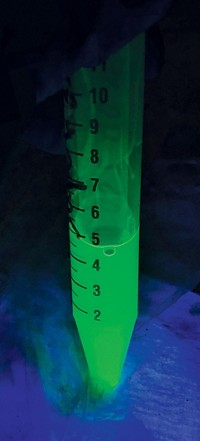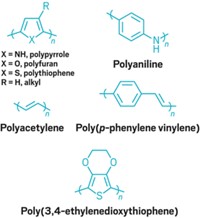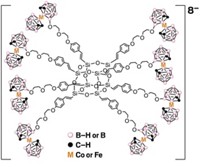Advertisement
Grab your lab coat. Let's get started
Welcome!
Welcome!
Create an account below to get 6 C&EN articles per month, receive newsletters and more - all free.
It seems this is your first time logging in online. Please enter the following information to continue.
As an ACS member you automatically get access to this site. All we need is few more details to create your reading experience.
Not you? Sign in with a different account.
Not you? Sign in with a different account.
ERROR 1
ERROR 1
ERROR 2
ERROR 2
ERROR 2
ERROR 2
ERROR 2
Password and Confirm password must match.
If you have an ACS member number, please enter it here so we can link this account to your membership. (optional)
ERROR 2
ACS values your privacy. By submitting your information, you are gaining access to C&EN and subscribing to our weekly newsletter. We use the information you provide to make your reading experience better, and we will never sell your data to third party members.
Synthesis
Improved Glow For Luminescent Lanthanides
Thiophene-derivatized complexes serve as potential building blocks for optoelectronic thin films
by Stephen K. Ritter
September 13, 2006
| A version of this story appeared in
Volume 84, Issue 38

Attaching polymerizable thiophene groups to chelating ligands could turn out to be a perfect strategy for developing highly luminescent lanthanide complexes that can be processed into thin films for a variety of optoelectronic applications. Assistant chemistry professor Ana de Bettencourt-Dias of Syracuse University described her group's efforts to design such complexes during a symposium sponsored by the Division of Inorganic Chemistry (INOR) at the American Chemical Society national meeting this week in San Francisco.
"We are developing new ligand systems capable of being electropolymerized, while at the same time efficiently complexing europium(III) and terbium(III) ions and sensitizing their luminescence," Bettencourt-Dias told C&EN. When excited, these complexes emit red and green light, respectively, which are two of the three primary colors, along with blue, necessary for the manufacture of multicolor displays, she added.
The valence electron structure of lanthanide ions is well-suited for strong luminescence, except that luminescence is "forbidden" in lanthanide ions by the so-called selection rules that govern energy-level transitions in molecules, Bettencourt-Dias explained. This problem of poor luminescence is easily overcome by complexing the metal ion with a chelating ligand "antenna," a chromophore such as an aromatic carboxylic acid that absorbs energy and funnels it to the metal center. Bettencourt-Dias and graduate student Subha Viswanathan decided to take the design one step further and attach the polymerizable thiophene groups to nitrobenzoic or isophthalic acid ligands.

The nitrobenzoic acid lanthanide complexes form either dimers or one-dimensional coordination polymers, depending on the position of the nitro and carboxylic acid groups, while the isophthalic acid complexes form 1-D or 2-D coordination polymers, she said. Both types of complexes exhibit improved luminescence over previously reported aromatic carboxylic acid lanthanide complexes.
The coordination polymers could be used to make the desired thin films, but Bettencourt-Dias is intent on electrochemically polymerizing the thiophene groups. Early attempts to do so were unsuccessful because the complexes were not soluble. The team discovered that the uncomplexed ligands can't be polymerized either, because of steric effects.
The Syracuse researchers returned to the drawing board to design a new class of ligands using bis(oxazolinyl)pyridines substituted with dithienylphenyl groups—two thiophene rings coupled to a phenyl spacer ring. Preliminary studies indicate these complexes are even better chromophores for the lanthanide ions and are more stable in solution than the nitrobenzoic or isophthalic acid versions. Their polymerizability has yet to be tested.
Lanthanide-modified polythiophenes provide "an interesting approach toward new solution-processible device materials, which are in strong demand," commented Frieder Jäkle of Rutgers University, Newark. The "advantageous" photophysical characteristics of these lanthanide complexes could find applications as emitting layers in light-emitting diodes and as optical chemical sensors, he said.
Jäkle presented related work on the luminescent properties of boron-modified polythiophene and polystyrene in an INOR symposium on polyfunctional organoboranes. Lewis acidic boron centers incorporated into the polymers form adducts with Lewis bases, such as pyridine, fluoride anions, and cyanide anions, quenching the thiophene luminescence or bringing about a color change. This property opens up the possibility of using those materials as chemical sensors.
Along those lines, Bettencourt-Dias and her coworkers have found that one thiophene-bis(oxazolinyl)pyridine ligand, which emits blue light, glows red or green when complexed to europium or terbium ions, respectively. "We could conceivably create blue by using the ligand by itself and generate red and green with complexes of any of the ligands that sensitize emission of europium and terbium ions," she noted. Preliminary work to test the plausibility of making electrochromic thin films from these complexes is just getting under way with collaborators, she added.





Join the conversation
Contact the reporter
Submit a Letter to the Editor for publication
Engage with us on Twitter